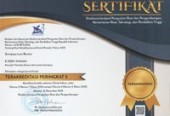The Need for a Legal Standard of Care in the AI Environment
DOI:
https://doi.org/10.28946/slrev.Vol7.Iss1.1507.pp73-86Keywords:
Artificial intelligence, AI regulation, Legal liability, Duty of care.Abstract
Artificial intelligence (AI) has risen to legal debate over legal liability in-volved in an incident. An intelligent machine can learn through experience and adapts its decisions accordingly. As such, if an intelligent machine’s be-haviour causes harm, the developer and the machine's owner may argue that the autonomous nature of AI systems has broken the causal link. The diffi-culty of determining who is liable for a harmful behaviour of an AI system is accentuated by the fact that tracing back the decision-making process of an AI system is not always possible. This paper aims to put forward a definition of a duty of care for developers and users of AI systems that could be the basis for the investigation of liability while seeking predictability of the allo-cation of legal liability in many cases involving AI incidents. The paper ex-amines some guidelines on ethics for AI to discern essential elements of the duty of care in the AI environment. The paper argues that a uniform minimum standard of care should be adopted internationally through model laws or even an international convention. A uniform standard of care should be enforced by State control rather than self-regulation by the AI industry. A licensing or certification requirement for AI products should be implemented to verify that the elements of the duty of care have been satisfied to control AI production and import/export relations. Violation of the standard of care can be an objective ground to negate or allocate negligence, especially when verifying errors in the design of the relevant software or if explaining the AI system's behaviour is not possible. A clear standard of care would, this paper assumes, help promote AI development and use and would not create imped-iments to investment in AI production.Downloads
References
American Bar Association. “ABA Resolution 112 Adopted 12-13 August 2019,†2019. https://www.americanbar.org/content/dam/aba/directories/policy/annual-2019/112-annual-2019.pdf.
Abbott, Ryan. “Everything Is Obvious.†UCLA Law Review 66, no. 2 (2019): 2–52.
Abeyratne, R. Legal Priorities in Air Transport. Springer, 2019.
Bantika, Nadia. “Artificially Intelligent Persons.†Hous. L. Rev 58, no. 3 (2021): 537.
Bashayreh, Mohammad, Fadi N. Sibai, and Amer Tabbara. “Artificial Intelligence and Legal Liability: Towards an International Approach of Proportional Liability Based on Risk Sharing.†Information & Communications Technology Law 30, no. 2 (May 4, 2021): 169–92, 187–90. https://doi.org/10.1080/13600834.2020.1856025.
Buchholtz, Gabriele. Artificial Intelligence and Legal Tech: Challenges to the Rule of Law†in Thomas Wischmeyer and Timo Rade-Macher (Eds.), Regulating Artificial Intelligence. Edited by Thomas Wischmeyer and Timo Rademacher. Cham: Springer International Publishing, 2020. https://doi.org/10.1007/978-3-030-32361-5.
Chopra, Samir, and Laurence F. White. A Legal Theory of Autonomous Artificial Agents. University of Michigan Press, 2011.
High-Level Expert Group on AI. “Ethics Guidelines for Trustworthy AI,†2018. https://www.aepd.es/sites/default/files/2019-12/ai-ethics-guidelines.pdf.
FIDIC. “FIDIC Contracts Have Been Developed over 50 Years as the International Standard for the Consulting Industry. They Are Recognised and Used Globally in Many Jurisdictions, on All Types of Projects.,†n.d. https://fidic.org/node/7089.
Frank, Xavier. “Is Watson for Oncology per Se Unreasonably Dangerous?: Making a Case for How to Prove Products Liability Based on a Flawed Artificial Intelligence Design.†American Journal of Law & Medicine 45 (2019): 273–94.
———. “Is Watson for Oncology per Se Unreasonably Dangerous?: Making A Case for How to Prove Products Liability Based on a Flawed Artificial Intelligence Design.†American Journal of Law & Medicine 45, no. 2–3 (May 6, 2019): 273–79. https://doi.org/10.1177/0098858819871109.
II, W. Nicholson Price. “Risks and Remedies for Artificial Intelligence in Health Care,†2019. https://www.brookings.edu/research/risks-and-remedies-for-artificial-intelligence-in-health-care/.
Jobin, Anna, Marcello Ienca, and Effy Vayena. “The Global Landscape of AI Ethics Guidelines.†Nature Machine Intelligence 1, no. 9 (September 2, 2019): 389–99. https://doi.org/10.1038/s42256-019-0088-2.
Kowert, Weston. “The Foreseeability of Human-Artificial Intelligence Interactions.†Texas Law Review 96, no. 1 (2018).
———. “The Foreseeability of Human-Artificial Intelligence Interactions.†Texas Law Review 96, no. 1 (2018). https://texaslawreview.org/foreseeability-human-artificial-intelligence-interactions/.
Li, Junfeng. “Artificial Intelligence Governed by Laws and Regulations.†In Reconstructing Our Orders, 73–74, 2018.
Lüer, Hans-Jochem. “The Lex Loci Delicti in Single Contact Cases A Comparative Study of Continental and American Law.†Netherlands International Law Review 12, no. 2 (1965): 124–59.
O’Sullivan, Shane, Nathalie Nevejans, Colin Allen, Andrew Blyth, Simon Leonard, Ugo Pagallo, Katharina Holzinger, Andreas Holzinger, Mohammed Imran Sajid, and Hutan Ashrafian. “Legal, Regulatory, and Ethical Frameworks for Development of Standards in Artificial Intelligence (AI) and Autonomous Robotic Surgery.†The International Journal of Medical Robotics and Computer Assisted Surgery 15, no. 1 (February 2019): 1–12. https://doi.org/10.1002/rcs.1968.
OECD AI. “OECD AI Principles Overview,†2019. https://oecd.ai/en/ai-principles.
Pasquale, Frank A. “DigitalCommons @ UM Carey Law Data-Informed Duties in AI Development†119 (2019): 1917,1932-1625.
Pepito, Joseph Andrew, Brian A. Vasquez, and Rozzano C. Locsin. “Artificial Intelligence and Autonomous Machines: Influences, Consequences, and Dilemmas in Human Care.†Health 11, no. 07 (2019): 932,936-937. https://doi.org/10.4236/health.2019.117075.
Pesapane, Filippo. “Artificial Intelligence as a Medical Device in Radiology: Ethical and Regulatory Issues in Europe and the United States.†Insights into Imaging 9 (2018): 745–53.
Pesapane, Filippo, Caterina Volonté, Marina Codari, and Francesco Sardanelli. “Artificial Intelligence as a Medical Device in Radiology: Ethical and Regulatory Issues in Europe and the United States.†Insights into Imaging 9, no. 5 (October 2018): 745-753,750-751. https://doi.org/10.1007/s13244-018-0645-y.
Ryan, Mark, and Bernd Carsten Stahl. “Artificial Intelligence Ethics Guidelines for Developers and Users: Clarifying Their Content and Normative Implications.†Journal of Information, Communication and Ethics in Society 19, no. 1 (March 3, 2021): 61–86. https://doi.org/10.1108/JICES-12-2019-0138.
Ryan, Mark, and Bernd Carston Stahl. “Artificial Intelligence Ethics Guidelines for Developers and Users: Clarifying Their Content and Normative Implications.†Journal of Information Communication and Ethics in Society 19, no. 1 (2021).
Schultz, Thomas. “Does Online Dispute Resolution Need Governmental Intervention? The Case for Architectures of Control and Trust.†North Carolina Journal of Law & Technology 6 (2004): 71–106.
Selbst, Andrew D. “Negligence and AI’s Human Users.†Boston University Law Review 100 (2020): 1315,1360-1370.
Sibai, Fadi N. “AI Crimes: A Classification†Proc. IEEE International Conference on Cyber Security and Protection of Digital Services. Ireland: Dublin, 2020.
Stein, Amy L. “Assuming the Risks of Artificial Intelligence.†Boston University Law Review 102, no. 3 (2022): 1006–7.
Stewart, James. “AI Companies Have a Duty of Care.†TrojAI, 2020. https://medium.com/trojai/ai-companies-have-a-duty-of-care-ac6a43fbf134.
Strous, Leon. “‘Should AI Be More Regulated?’†In Internet of Things, Information Processing in an Increasingly Connected World. Springer, 2020.
Sullivan, Hannah R., and Scott J. Schweikart. “Are Current Tort Liability Doctrines Adequate for Addressing Injury Caused by AI?†AMA Journal of Ethics 21, no. 2 (2019): 160–61. https://doi.org/10.1001/amajethics.2019.160.
Wagner, Gerhard. “Robot Liability.†SSRN Electronic Journal, 2018. https://doi.org/10.2139/ssrn.3198764.
Whittaker, Meredith, Kate Crawford, Roel Dobbe, Genevieve Fried, Elizabeth Kaziunas, Varoon Mathur, Sarah Myers West, Rashida Richardson, Jason Schultz, and Oscar Schwartz. “AI Now Report 2018,†2018. https://ainowinstitute.org/AI_Now_2018_Report.pdf.
Yavar Bathaee. “The Artificial Intelligence Black Box and the Failure of Intent and Causation.†Harvard Journal of Law & Technology 31, no. 2 (2018): 889,898. https://jolt.law.harvard.edu/assets/articlePDFs/v31/The-Artificial-Intelligence-Black-Box-and-the-Failure-of-Intent-and-Causation-Yavar-Bathaee.pdf.















